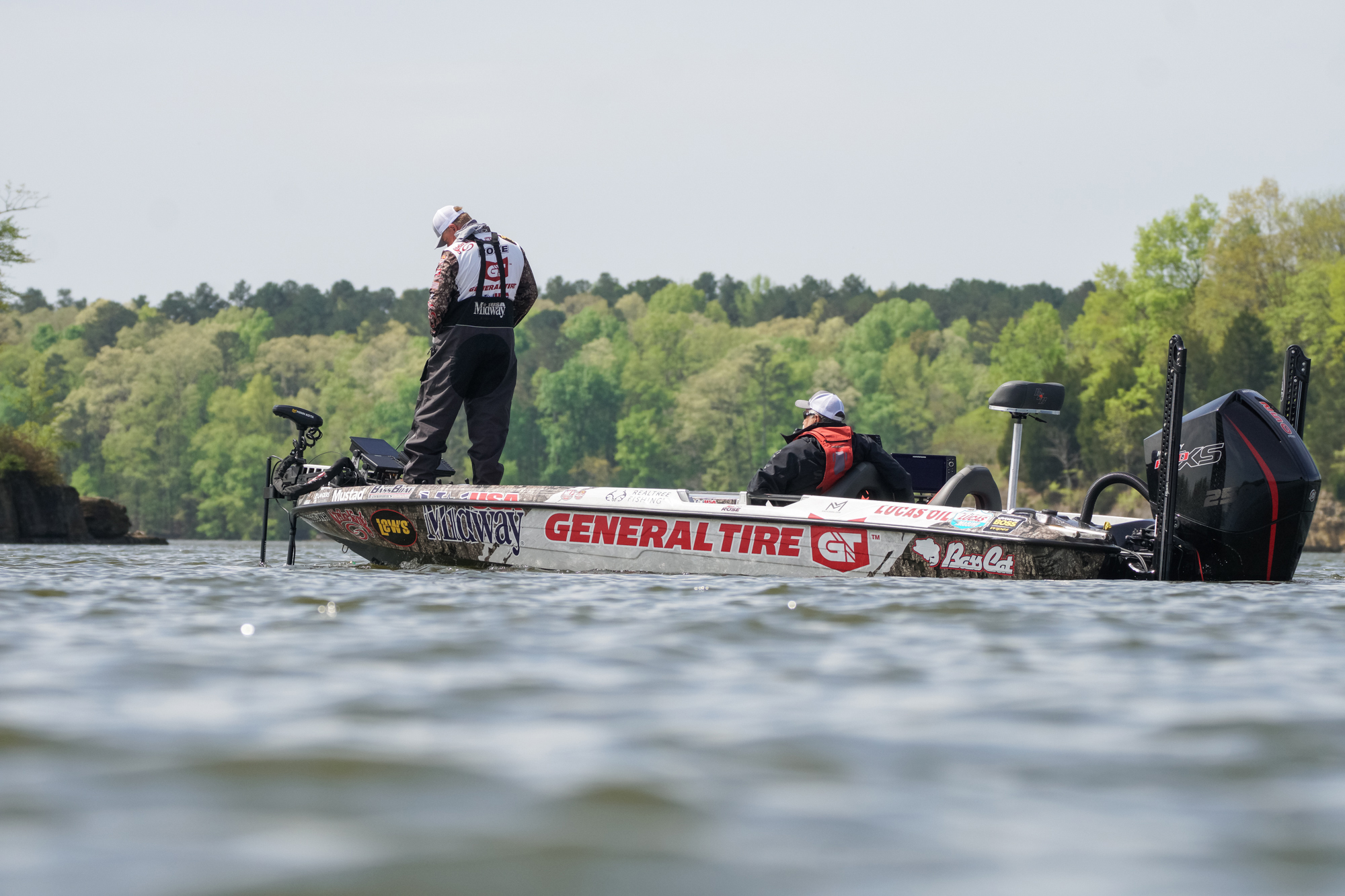MARK ROSE: “Ledge Fishing” Everywhere (Even in Your Local Pond)
You can apply "ledge" truths from the Tennessee River to almost any lake you fish

The bass have been laying on the bank all over the country all spring, and now it’s entering a time of year that I love: the postspawn and early summer. It’s the time when I get offshore and do some ledge fishing.
The term “ledge fishing” comes from the Tennessee River lakes, where the river channel creates an actual ledge that the bass get on. You’re going to hear a lot of references to ledges at the upcoming Bass Pro Tour event on Watts Bar, but the truth is you can “ledge fish” everywhere, no matter where you live because it’s become a generic term for fishing offshore.
The same principles apply whether you’re fishing a pond in your backyard, a highland reservoir out west, a natural lake up north or a lake on the Tennessee River.
What to Look For
After the shad finish their spawn, they move offshore and get down in the cooler water because it’s more comfortable and oxygenated. This is the biggest reason why bass get off the bank this time of year – they follow the food.
Shad need different water conditions with more oxygen and cooler water as the temperatures heat up, or they won’t survive. Bass are the same. They want to be more comfortable themselves and also need to be around the forage, to feed up after the spawn. Because both bass and shad are away from shore, it can make things easier this time of year because bass will stack up in small areas with everything they need. You can catch them in a hurry when you find them.
Finding these little sweet spots comes down to looking for structure to hold bass.
I look for creek channels and tributaries entering the main body of water, whether it’s the main lake or out on a river ledge. It could also be a ditch that leads to deeper water from rivers or pockets. These are good migration routes for shad and bass and little pieces of cover are key; it might be a stump, mussel bar, current break, or just something the bass can relate to.
I always think of offshore fishing like a house and how people walk around to objects like the couch, the fridge, bedrooms and doorways. Bass are the same: They move around to find what they need and to feel comfortable, protected, and to eat.

These “Ledge” Basics Apply Everywhere
Many anglers think of ledge fishing as just something to do on the TVA lakes, but the same principles apply everywhere you’re fishing. There are ways to do the same thing on any body of water, and all over the country.
After the bass spawn in your local fishery, they’ll head to deeper water to take a break and have a cooler temperature. It doesn’t matter what body of water you’re fishing, they’ll find something to relate to. They may seek out an offshore rock pile, a ditch, a hard spot or even deep grass – just something for them to feel comfortable around in deeper water.
Even on a little pond, the first depth changes away from the bank will hold fish just because there’s more shade, which gives bass a place to get away from the hotter temperatures up shallow.
I apply the same principles and look for the same things whether I am preparing for our upcoming tournament on Watts Bar or fishing an Ozarks lake or highland reservoir.
Offshore is the place to be. Right now is the time to tie on a Strike King 6XD, swimbait, or big football jig and head to deeper water. You can have a lot of fun out there when you locate the fish. The bite can be lights out.